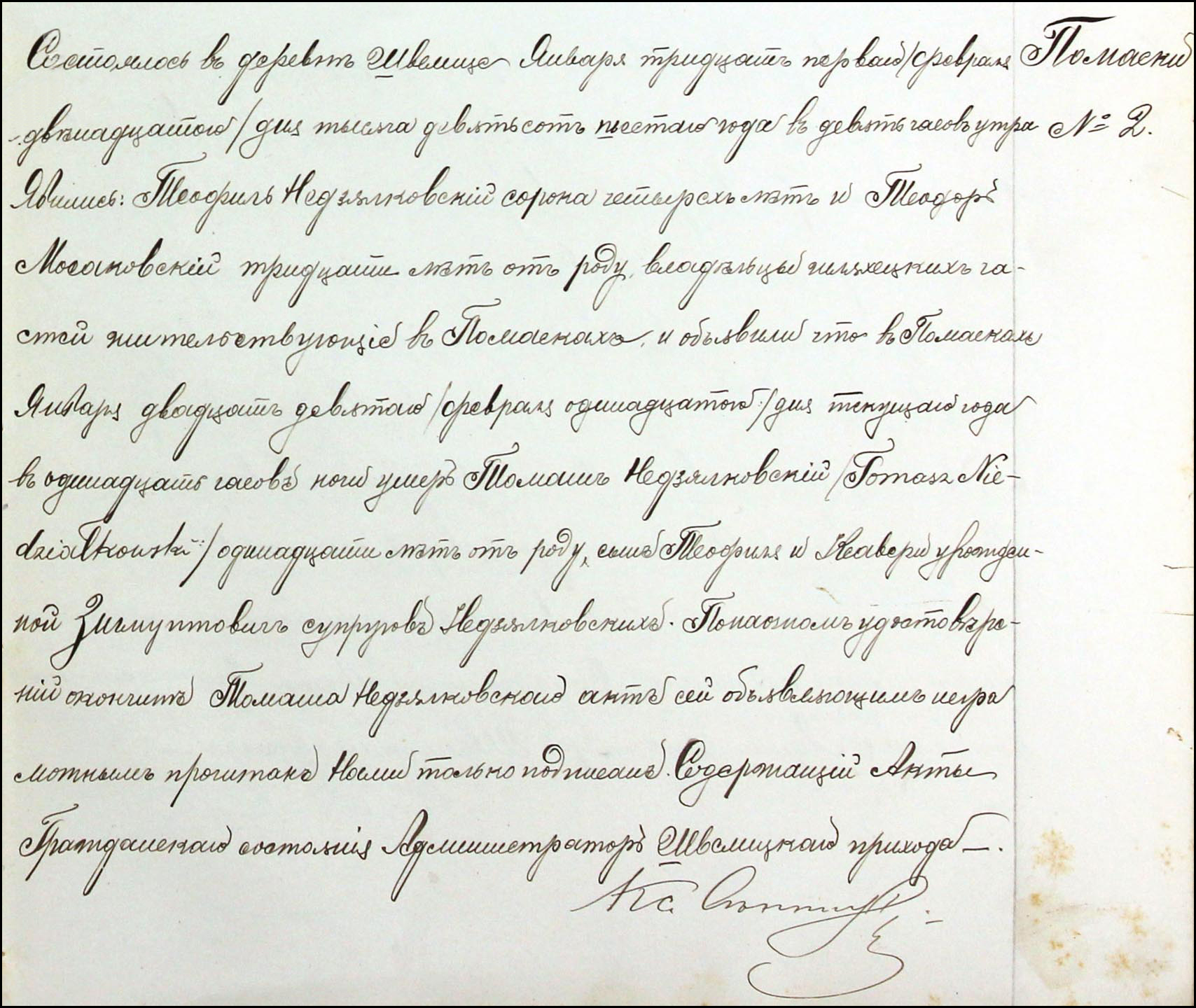Tomasz Niedziałkowski, my great uncle, died on 11 February 1906 in Pomaski, Maków Powiat, Łomża Gubernia, Congress Kingdom of Poland. He was buried on 12 February 1906 in Szwelice, Maków Powiat, Łomża Gubernia, Congress Kingdom of Poland. He was eleven years old.
SOURCE: Roman Catholic Parish of Saint John the Baptist (Szwelice, Maków Powiat, Łomża Gubernia, Congress Kingdom of Poland), “Duplicate Civil Registrations of the Parish of Szwelice for the Year 1906,” folio 56 recto, entry 2, death and burial record for Tomasz Niedziałkowski, recorded 12 February 1906; State Archives in Pułtusk, digital images, Genbaza (http://metryki.genbaza.pl : accessed 15 May 2016).
Click on the link for a PDF copy of the Death and Burial Record for Tomasz Niedziałkowski – 1906. Translated from the Russian, the record states:
Pomaski № 2.
This happened in the village of Szwelice on January thirty-first / February twelfth in the year one-thousand nine-hundred six at nine o’clock in the morning. There appeared Teofil Niedziałkowski, forty-four years old, and Teodor Mosakowski, thirty years old, owners of the noble parts [of the village] and residing in Pomaski, and they stated that, in Pomaski, on January twenty-ninth / February eleventh of this same year, at eleven o’clock at night, Tomasz Niedziałkowski died, eleven years old, son of the married couple Teofil and Ksawera née Zygmuntowicz Niedziałkowski. After eyewitness testamony on the death of Tomasz Niedziałkowski, this document was read aloud to the declarants who are illiterate, and was signed by us.
[signed] Reverend Sennicki
My grandfather was only two years older than Tomasz, and he must have been greatly affected by the loss of his brother. Note that Teofil Niedziałkowski is described as the “owner of the noble parts.” Historically, the Nniedziałkowski family were landed nobility, although the concept of being a member of the nobility during this time period was probably not recognized by the government.
There is an error in the dates of this record. Because the record is double dated (the first date in each pair of dates is according to the Julian Calendar and the second date is according to the Gregorian Calendar). In 1906, the two calendars differed by 13 days. However, the date of the entry states “31 January 1906 / 12 February 1906” which is a difference of only 12 days. The actual date of death is correct: “29 January 1906 / 11 February 1906,” with a difference of 13 days. I have chosen to accept the date of 12 Feb 1906 as the date of the record (and presumed date of burial) for two reasons. First, the Roman Catholic Church used the Gregorian Calendar, which would have been more familiar to the priest than the Julian Calendar. Second, deaths are generally reported soon after the event, making it (slightly) more likely that the death was reported the next day, rather than two days later.
Copyright © 2016 by Stephen J. Danko




